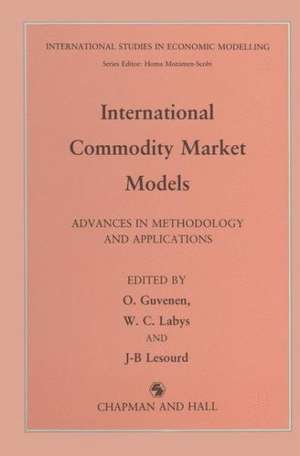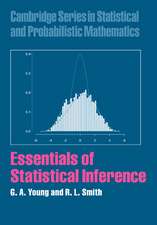International Commodity Market Models: Advances in Methodology and Applications: International Studies in Economic Modelling
Editat de O. Güvenen, Walter C. Labys, J. B. Lesourden Limba Engleză Paperback – 23 oct 2012
Preț: 643.34 lei
Preț vechi: 756.86 lei
-15% Nou
Puncte Express: 965
Preț estimativ în valută:
123.11€ • 129.45$ • 101.72£
123.11€ • 129.45$ • 101.72£
Carte tipărită la comandă
Livrare economică 16-30 aprilie
Preluare comenzi: 021 569.72.76
Specificații
ISBN-13: 9789401053679
ISBN-10: 9401053677
Pagini: 356
Ilustrații: XXII, 330 p.
Dimensiuni: 155 x 235 x 19 mm
Greutate: 0.5 kg
Ediția:Softcover reprint of the original 1st ed. 1991
Editura: SPRINGER NETHERLANDS
Colecția Springer
Seria International Studies in Economic Modelling
Locul publicării:Dordrecht, Netherlands
ISBN-10: 9401053677
Pagini: 356
Ilustrații: XXII, 330 p.
Dimensiuni: 155 x 235 x 19 mm
Greutate: 0.5 kg
Ediția:Softcover reprint of the original 1st ed. 1991
Editura: SPRINGER NETHERLANDS
Colecția Springer
Seria International Studies in Economic Modelling
Locul publicării:Dordrecht, Netherlands
Public țintă
ResearchCuprins
One Advances in Modelling Methodology.- 1 New horizons in international commodity market modelling.- 2 Computing equilibria in imperfectly competitive commodity markets.- 3 Recent developments in spatial (temporal) equilibrium models: non-linearity, existence and other issues.- 4 Shadow pricing for natural resource goods and services, using the emergy method.- Two Application of New Methodologies to Particular Commodity Markets (Agricultural, Mineral and Energy Commodities).- 5 The effectiveness of the World Coffee Agreement: a simulation study using a quarterly model of the world coffee market.- 6 Modelling the world fibre market.- 7 Technical change, relative prices and intermaterial substitution.- 8 Spectral interpretation of stock adjustment processes in mineral markets.- 9 The linkages between the markets for petroleum products and the market for crude oil: an econometric—linear programming study.- 10 Modelling the international natural gas market: the case of the Western European natural gas market.- Three Application of New Methodologies to Commodity Futures Markets.- 11 Dynamic welfare analysis and commodity futures markets overshooting.- 12 When does the creation of a futures market destabilize spot prices?.- 13 The producer and futures markets.- 14 Futures prices and hidden stocks of refined oil products.- Four Application of New Methodologies to Other Commodity Market Issues.- 15 Post-recession commodity price formation.- 16 Trade-offs between short-run stability and long-run risk when stabilizing a commodity market.- 17 Are commodity prices leading indicators of OECD prices?.- 18 Conclusion.
Recenzii
`... reflects the new concerns of economists, mineral-commodity modellers, and industry-commodity specialists ... useful for focusing our attention on this important subject.'
Resources Policy
Resources Policy

























